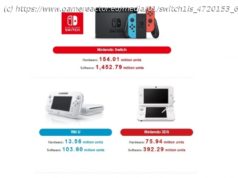The ACCC will allow regional broadband charges subsidising NBN’s satellite and fixed-wireless services to be added on top of its regulated non-NBN high-speed broadband access pricing.
The Australian Competition and Consumer Commission (ACCC) has announced that the government’s proposed Regional Broadband Scheme (RBS) charge subsidising satellite and fixed-wireless services on the National Broadband Network (NBN) will be extended to non-NBN high-speed broadband services.
The final decision on access pricing for super-fast broadband services (SBAS) , local bitstream access services (LBAS) , and Telstra fibre access broadband (FAB) services during the NBN rollout, published on Friday, has shifted somewhat from the draft decision in January, with the ACCC explaining that prices have been amended partially due to criticisms of absorbing assumed RBS charges into the previous pricing.
Instead, the ACCC has made provisions to allow RBS charges to be implemented on top of the regulated access pricing should this be legislated by the federal government.
«Prompted by the views put in the submission to our draft decision from the NBN-comparable carriers, we gave further consideration to how the NBN’s prices for the 25/5Mbps [service] had been set, and whether there was likely to be a significant cross-subsidy for regional fixed-wireless and satellite services in these prices, » the ACCC said in its Superfast Broadband Access Service and Local Bitstream Access Service Final Access Determination joint inquiry: Final decision report [PDF] .
«Requiring LBAS and SBAS providers to absorb the proposed RBS charge could push their revenues per line after subtracting the charge below their per line costs of supplying the service. It was therefore proposed to treat the NBN prices as approximate cost benchmarks for LBAS and SBAS providers and allow the RBS charge to be added on top of the benchmark prices.»
The Department of Communications had earlier this week flagged the extension of the rural broadband tax during Senate Estimates, saying the Bureau of Communications Research had undertaken two rounds of public consultation on the matter before coming to the decision to extend the AU$7.10 per month levy to non-NBN services in order to fund NBN’s satellite and fixed-wireless services.
«Currently, the NBN Co business model has always been done on the basis that NBN users would cross-subsidise to the tune of the AU$7 the fixed-wireless and satellite, » the department told Senate Estimates on Wednesday.
«The issue that has arisen is that NBN Co is facing competition from other fixed-line providers who don’t pay that. So the proposition with this regional broadband scheme is to apply that same amount across a wider base of networks so that NBN Co is not facing competition from someone who’s not paying the same amount.»
Communications Minister Mitch Fifield added that the former Labor government had envisaged a similar levy when planning the long-term funding of the NBN’s satellite and fixed-wireless networks, with the extension to only affect 5 percent of the market.
«The bulk of that is essentially already being paid by NBN, so ultimately it would be, under this regime, about 95 percent of the fixed-line broadband market made up by NBN, so it’s not a new impost on people who are serviced by NBN because it’s already in effect being paid. This is also an effort to make explicit and transparent a cross-subsidy that’s already there, » Fifield explained during Senate Estimates.
«The 5 percent of the fixed-line broadband market which are not on NBN are those providers who will be subject to this, but the extent to which it’s passed through [to consumers] is another question.»
Changes were also made to SBAS and LBAS pricing in response to NBN’s RSP-specific dimension-based connectivity virtual circuit (CVC) discount announced earlier this year, after the ACCC received a submission from NBN suggesting this be taken into account.
«Prompted by the suggestion by NBN Co in its submission to the draft decision, [the change] was to require SBAS and LBAS providers to give discounts to each RSP based on their respective aggregation capacity acquired per port on each SBAS and LBAS network using NBN Co’s new schedule of RSP-specific CVC discounts, » the ACCC said, adding that NBN must keep the ACCC up to date on its falling CVC prices .
The new SBAS and LBAS pricing will see services charged at AU$27 initially per port per month for speeds of 25/5Mbps, with subsequent pricing to be the price of the NBN’s access virtual circuit (AVC) TC-4 25/5Mbps product price as amended in future.
The aggregation-to-POI charge will be priced between AU$8 and AU$17.50 per 1Mbps per month depending on the dimensioning by an RSP per port in Kbps, and will then be subsequently amended as per the pricing for the NBN’s CVC TC-4 product.
The pricing terms will apply to TPG’s VDSL network across the Australian Capital Territory, hybrid fibre-coaxial (HFC) networks in regional Victoria, and fibre-to-the-basement (FttB) networks in capital cities; and fibre networks belonging to Vocus, OPENetworks, LBN Co, and Opticomm.
Telstra FAB pricing terms, meanwhile, will apply to Telstra’s fibre-to-the-premises (FttP) South Brisbane and Velocity Estates networks, and will be priced according to their zones and updated each year.
The Telstra FAB pricing was lowered across port charges but doubled for aggregation charges following a submission from Telstra saying it would incur costs by charging different aggregation pricing across FAB and wholesale ADSL services, the latter of which the ACCC announced its terms for in February.
«We proposed rebalancing the draft decision charges for Telstra’s fibre services by setting the aggregation charge to be the same as the regulated aggregation charge for wholesale ADSL and lowering the port charges to compensate for the rise in aggregation revenue that Telstra would be expected to receive, » the ACCC said.
Excluded from the new pricing terms are providers supplying SBAS and LBAS services to fewer than 12,000 end users, as approved by an independent analysis the ACCC obtained from UXC Consulting [PDF] ; HFC networks that are due to be transitioned over to NBN ‘s ownership; services provided exclusively to business customers, public bodies, or charity customers from a multiplexer or node in CBD areas of Australian capital cities; the already regulated domestic transmission capacity services (DTCS) ; and mobile networks, because the government does not consider mobile broadband to be a direct substitute for fixed-line broadband.
Домой
United States
USA — software ACCC approves passing rural NBN tax onto non-NBN super-fast broadband






